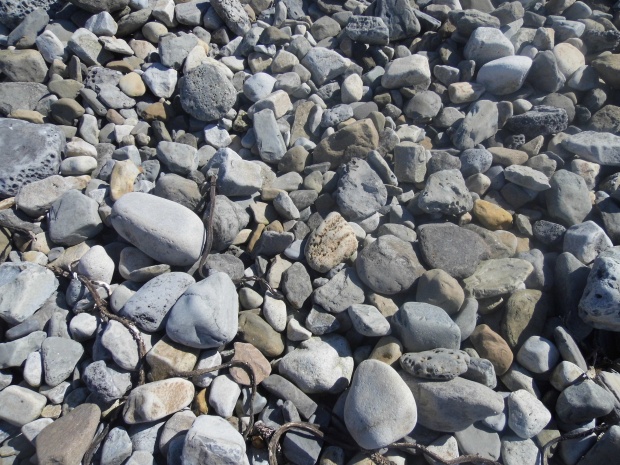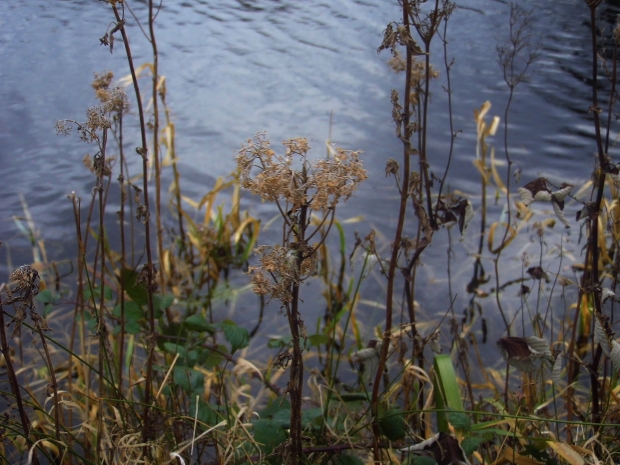The noise of the woodwork room hit me over and over. A cascade of sound; over and over. Every little hammer may as well have been hitting me on the skull. The lights; they were flickering, attacking my eyes. The whole room was in motion; hammering, sawing, measuring, talking. I looked at the block of wood I had been working on; I was still on the first step. I tried to saw but my hands and eyes would not work together. I tried to hammer but the sound hurt too much, even with protective earmuffs. My hands’ desperate attempts at hammering only resulted in me missing the block or worse; splitting it in two. Everyone else seemed to understand what they were doing.
All of my body was filling up with fear. I tried to focus my mind, knowing full well it was in vain. I felt like everyone was staring at me, no matter how many times I looked around the room and saw everyone else deeply engrossed in their work. I wanted to run! Everything was too much! Too much light, too much noise, too much happening. The anxiety in my head was building upwards and upwards, and felt like it would overflow…
What I experienced is called Sensory Overload. It was’t the first time it happened and it wouldn’t be the last. It is the feeling of overwhelment that happens when there is simply too much sensory information for the brain to deal with. The brain can’t cope with and like a broken computer, it just crashes. It can make me feel helpless and alone. As part of Transition Year, everyone had to try out all the subjects the school offered for Leaving Cert. Even though I wasn’t the only one who had never done woodwork before, I felt like I was. Sensory overload can be incredibly difficult to explain, other than through simile it seems, but it is an issue that affects many people with Asperger’s Syndrome and Autism like me.
That incident brought back to me the realities of my capabilities and my in-capabilities. It is useful to be aware of one’s own strengths and weaknesses. All the same, I still felt frustrated. Why couldn’t my hands do what my head told them? Why couldn’t I do “simple” things like hold a saw right? It seemed like everyone else was able to do it. Why hadn’t I learnt to cope? Why did I find it so hard to focus on just one thing at a time? I knew full well that my sensory issues, my difficulties in concentration and my poor coordination were not my fault but it was very easy to blame myself.
The odd thing about Asperger’s Syndrome is that it is a “hidden disability.” You can’t tell that someone has it just by their outside appearance. The same goes for ADHD and learning disabilities such as dyslexia, dyscalculia and dyspraxia, as well as mental illnesses such as Depression and OCD. A few months prior to this incident, I had achieved the highest exam results in my year in school, why would anyone assume I struggled with something so seemingly trivial as holding a saw. To me, for example, my ADHD seems perfectly obvious but to those around me it may not make sense at all. It is easy for me to see the negative effects that Asperger’s and ADHD have on my life, it takes a lot of effort to see the positives. However, the positives are still there. The same explanation could be given for both my strengths and my weaknesses. I think this is a thought process that a lot of people with disabilities have to go through before they can accept themselves.
When you look at a classroom, you have to look at each student individually. Plato is reputed to have said:
“Be kind, for everyone you meet is fighting a hard battle”
I think this is a great mantra (whether it was actually Plato who said it or not 😉 ) for dictating our daily interactions with one another in the school environment and the wider world. Everyone is fighting their own battle everyday: teachers and students. For a student with a disability or a student who struggles with their mental health, this can be an especially hard battle.

Each of us has our own rocky path to travel.
Let’s take one hypothetical classroom:
Odds are there could could be a student with depression; maybe they can barely stay awake in class, let a lone concentrate. Their insomnia was so bad last night they barely slept and sleep barely seems like a refugee from the day’s pain anyway, with the likelihood of nightmares.
There could be a student with dyslexia too; everyone is taking down notes off the board but for them, reading can feel like the hardest thing in the world. The letters and numbers are moving around the board, taunting them. They’re feeling a sense of desperation, the need to keep up with the class; the desire to prove themselves “worthy” of a system that just might not be suited to them.
There could be a student with ADHD; for them, the act of concentrating on just one thing at a time can seem like performing the twelve labours of Hercules. There’s four billion and one things in their head and all they want to do at this moment in time is move their feet.
That’s just three examples! I could go on listing potential struggles for hours and hours.
When you focus in on a single classroom, it becomes clear that the “normal student” is much more scarce than you might have thought. The classroom becomes a living classroom; a diverse ecosystem. Every student is suddenly an individual: an individual with their own strengths and weaknesses, an individual with their own line of successes and failures to look back on. This can make the learning environment more difficult or it can make it a more beautiful and vibrant place. The choice, in my opinion, is up the teachers and the education system. After all, aren’t teachers the ones who always taught us that everyone is unique?
This idea might sound radical. It might seem like a gargantuan task, but simple, small changes can make a big difference. My woodwork teacher, for example, after a few weeks, became aware of my sensory difficulties and he was really understanding. He gave a different task to do as my assessment for woodwork; a written project. I am eternally grateful to him for this; woodwork was no longer a huge source of stress and anxiety. Unfortunately, from what I can see, in the education system, changes like these are the exception rather than the rule. But this can be so easily changed!
The system can really crush people who are already vulnerable. Every student student fights their own battle, walks their own journey. They may be fully aware of their faults, but not their talents. They could have a diagnosed disability. They could have an undiagnosed disability unbeknownst to themselves and only discover later in life. I for one spent the first fourteen years of my life wondering why I was different, why I was “broken”, before I received any kind of diagnosis. But disability or no disability, we each have our own uncertain path to thread.
We cant’t pretend that the classroom is a still and stagnant place. We can’t pretend anymore that the classroom is not a diverse place. The classroom is a living thing. With a few changes, some great, some small, we can make school a better place for young people. It can be a place of both nurture and knowledge. The classroom can become an ecosystem that is not only living but is also alive!

The classroom can become an ecosystem that in not only living but also alive!

Reblogged this on Celebrating Individual Abilities and commented:
The classroom can and should be a place where children of all abilities and cognitive backgrounds not only live but thrive.
LikeLiked by 1 person
Thanks for reblogging
LikeLike
I’m an Educational Assistant in High School and you are very correct. There is really no such thing as normal. Each student is an individual with unique challenges and gifts.
LikeLiked by 1 person
Thank you for your comment! I agree with you entirely 🙂
LikeLiked by 1 person